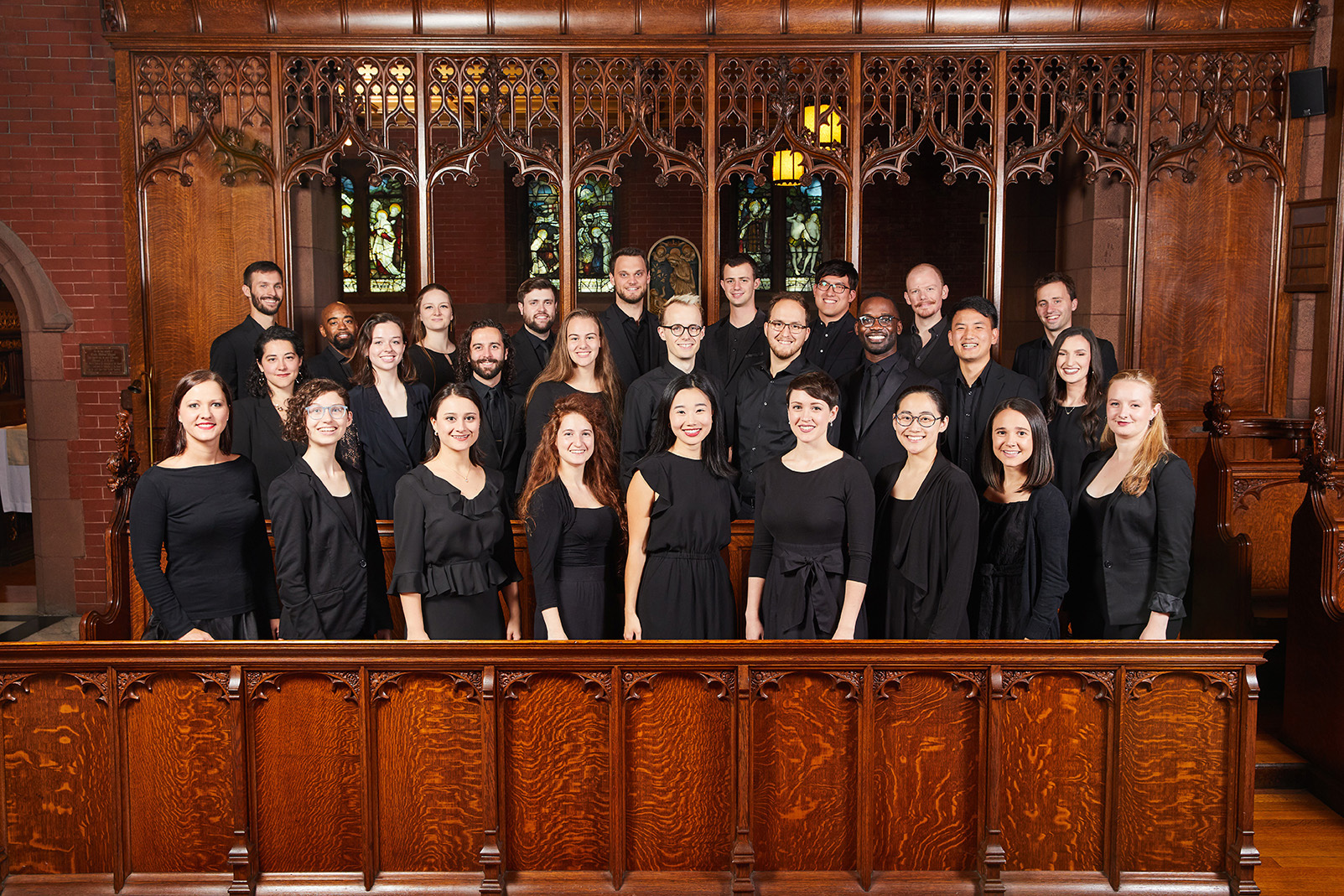
Institute of Sacred Music
On Dec. 5, 1791, Austrian composer Wolfgang Amadeus Mozart died while composing his Requiem. The sole completed movement, the Introit, was performed at his funeral service in Vienna. Mozart’s wife Constanze commissioned another man — Franz Xaver Süssmayr — to finish the now widely-beloved work.
“The Mozart Requiem is among the towering works of the orchestra repertoire,” said Jeffrey Douma, the director of the Yale Glee Club.
On Sunday, Oct. 13 at 4 p.m. in Woolsey Hall, the Yale Schola Cantorum, an ensemble sponsored by the Institute of Sacred Music, will perform the Süssmayr completion of the Mozart Requiem alongside two works by Brahms: The Op. 54 “Schicksalslied” and Op. 53 “Alto Rhapsodie.”
This performance stands out because of the orchestra’s use of period instruments. Period instruments are similar or, in some cases, identical to the instruments musicians used during the time the works were composed — the 18th century for Mozart and the 19th century for Brahms.
Daniel Lee, a member of the YSM’s early music faculty, organized the chamber orchestra. He selected faculty, YSM students, alumni and undergraduates who had experience playing on period instruments. Lee explained that in addition to being made with different dimensions, 19th century violins have smaller chin rests and strings made from the fibers of animal intestines. Players will not use modern horns, clarinets or timpani and will tune to a center pitch several Hertz below the modern standard of 440.
The two Brahms pieces on the program were composed in the late 1860s. Brahms wrote the “Schicksalslied,” which translates to “Song of Destiny,” using poetry by Friedrich Holderlin.
“Brahms was a complicated man, kind of melancholic,” said David Hill, principal conductor of the Schola Cantorum. “This work portrays that in an exceptionally beautiful way.”
In the three-year period Brahms was working on the “Schicksalslied,” he also wrote the “Alto Rhapsodie” as a wedding gift to Clara Schumann’s daughter Julie. Mezzo-soprano Karolina Wojteczo MUS ‘20 will be the soloist in the “Alto Rhapsodie.”
Hill said that the work reflects Brahms’s romantic feelings for both Clara and, to some extent, her daughter.
“The first half of the program [is] very intense emotional music,” Hill said. Because the two works were written at the same time, they “combine Brahms’s mental and physical wanderings with the joy of an impending wedding.”
The second half of the concert features the 45-minute Mozart Requiem. According to Phoebe Oler DIV ‘22, the Mozart is also a “very intense and powerful piece of music.”
Süssmayr’s version splits the Latin requiem mass into 14 movements which comprise the larger sections Introit, Kyrie, Sequence, Offertorium, Sanctus, Benedictus, Agnus Dei and Communio.
Benjamin Beckman ’23, who sings in the Schola Cantorum, described different parts of the piece as “stormy and dark,” “delicate and beautiful” and “thunderous and bombastic.”
Douma said that although Süssmayr’s completion of the Requiem is “the historical version of the work that has been performed and beloved for 200 years,” multiple contemporary versions of the work exist.
“How much of it is Mozart, and how much of it is Süssmayr? Ultimately we’ll never have the definitive answer,” Douma said.
According to Douma, Süssmayr, who had worked with Mozart as a copyist for his prior operas, “was probably not the most accomplished musician.” Douma added that “he was not even a full-fledged student” and cited problems with orchestration and “un-Mozartian style.”
In Feb. 2020, the Yale Glee Club and Yale Symphony Orchestra will play pianist and Harvard musicologist Robert Levin’s 20th century completion of the Requiem.
A major addition in Levin’s completion was a fugue at the end of the mass’s Sequence. A fugue is a composition in which a short melody is introduced by one part and imitated by others. Levin used an archival document of Mozart’s discovered in the 1960s to develop the fugue. Levin also changed much of the piece’s orchestration.
“Levin uses his knowledge of Mozart’s orchestration to create [an orchestration] that’s more idiomatic, and in my opinion, more successful,” Douma said.
When Hill and Douma first realized that they were both planning on programming the Mozart Requiem for their respective ensembles, they contemplated choosing another piece to avoid repetition.
Hill said that after discussion, the two conductors “saw virtue in trying to present two possible works in the same year so people can come and compare and contrast [them].”
Although Douma favors the Levin completion, he acknowledged the immense legacy of the Süssmayr version that the Schola Cantorum will sing on Sunday.
“It’s a version of the work that’s come to us after so many decades, it is what’s been beloved by so many people,” Douma said. “It would be a tragedy if we stopped performing it, so it’s really wonderful to be able to experience the piece from multiple angles.”
The Schola Cantorum was founded in 2003.
Phoebe Liu | phoebe.liu@yale.edu







